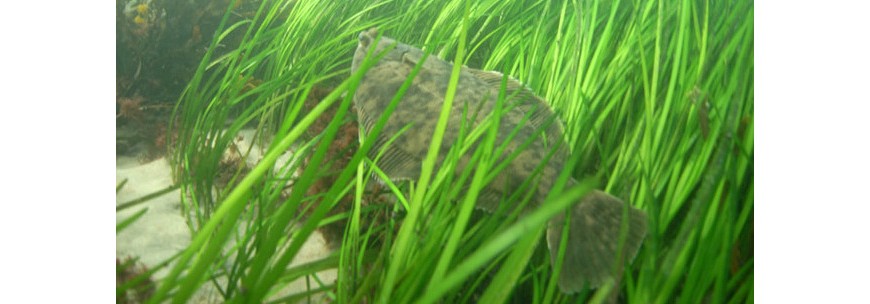It’s hard to watch a fishery die, particularly one that you’ve been a part of for virtually all of your life.
I’ve long mourned the demise of the Southern New England/Mid-Atlantic (SNEMA) stock of winter flounder.
I’m not sure when I caught my first flounder, but if I had to guess, I’d say it was sometime during the summer of 1957, when my parents would take me down to a park along the Connecticut shore. There, my father would cast sandworm-baited hooks into the tide and, when something bit, let me reel the fish in. Because of those trips, I was a committed angler by the time I first walked through a kindergarten door, and for that, flounder deserves most of the credit or blame.
Throughout the early 1960s, whether we fished from shore or from our newly purchased used boat, flounder were our usual target. Although they were most abundant during the spring and fall, we caught them throughout the year. Whenever we went fishing, we had faith that at least a few flounder would be around.
And, for decades, they were.
Then, in 1979, things got a little strange. Before then, when we caught a lot of winter flounder, they were generally small. The fish that we kept probably measured somewhere between eight and twelve inches, with most toward the lower end of that range. We released a lot of smaller fish, including quite a few “postage stamps” just three or four inches long, while fish over a pound were rare. Prior to ’79, I never caught a winter flounder that weighed more than a pound and a half.
But in the fall of ’79, we suddenly experienced a flood of larger fish. Many exceeded a pound, and a few two-pounders were caught. There were still smaller fish around, but beginning in ’79, and continuing through the early 1980, large flounder began made up a bigger share of the catch.
In late 1983, I traded Connecticut’s waters for the shallow, sandy expanses of New York’s Great South Bay, where flounder seemed even more abundant than they were in Long Island Sound. The National Marine Fisheries Service (NMFS) estimates show that, in 1984, New York anglers took home about 12.6 million winter flounder, more than they landed in any year before or since. But the trend that we first noticed in Connecticut continued; we were catching more larger flounder, but seeing fewer small fish.
In 1988, New York adopted an 8-inch minimum size for recreationally-caught winter flounder; by then, recreational flounder landings had already fallen to 3.8 million pounds, just 30% of what they had been five years before. The fish were clearly experiencing problems, but no one was quite sure what they were, or how to solve them.
Back then, as now, managers recognized three stocks of winter flounder: Southern New England/Mid-Atlantic, Gulf of Maine, and Georges Bank. They believed that the SNEMA stock spent summers in the ocean, entered bays and estuaries in the fall, spawned in late winter, and departed the bays in late spring, although managers recognized that some individuals remained inshore. Recreational and commercial management measures were based on such belief. Both the NMFS and the Atlantic States Marine Fisheries Commission (ASMFC) managed the SNEMA stock as a single unit, across a range that stretched from southern Massachusetts to Maryland.
Research conducted in Long Island’s Shinnecock Bay suggests that such broad-scale management may not be appropriate, given the winter flounder’s complex stock structure. The researchers noted that,
Winter flounder movements in Shinnecock Bay deviated from the expected behavior for this species south of Cape Cod in terms of inshore residency and response to the seasonal environment. This study provides supporting evidence that winter flounder in Long Island bays exhibit a complex stock structure that warrants further investigation to identify biological traits exhibited by resident and dispersive groups…Complex stock structure may be more common in winter flounder than previously thought…Resolving the stock structure and migratory behavior of Long Island winter flounder is crucial to determine the impacts of local harvest on the sustainability of the species. If resident winter flounder represent a separate genetic population, the seasonally more abundant dispersive population may mask a long-term decline in resident winter flounder that once supported Long Island fisheries and may eventually lead to extirpation of residents. This outcome would require management of each population separately based on population-specific life history variables. On the other hand, if resident and dispersive winter flounder are contingents within a single genetically distinct population that exhibit partial migration, the relative impact of harvest on resident and dispersive individuals can be complex. Management would need to consider the relative abundance of each contingent through habitat or other conservation efforts aimed at a specific contingent.
The management measures that were put in place proved ineffective. The New England Fishery Management Council, which had jurisdiction over the species in federal waters, refused to establish commercial harvest quotas until an amendment to the Magnuson-Stevens Fishery Conservation and Management Act forced it to do so in 2010; the stock was already in such poor condition that such quota was, for a brief while, set to zero. Inshore, winter flounder were such an important part of the recreational fishery for such a long time that state efforts to conserve the species ran into stiff resistance from members of the recreational fishing industry.
Natural threats were also increasing. Flounder in their first year of life were facing increased levels of predation from blue crabs as well as summer flounder. Warming inshore waters led to an increased abundance of sand shrimp, a small crustacean that was frequently preyed upon by adult winter flounder, but has now become an important predator of flounder eggs and recently-hatched juveniles.
The SNEMA stock spiraled downward, falling so low in some New York bays that genetic diversity was lost and inbreeding began to occur.
The last complete assessment of the SNEMA stock, referred to as a “benchmark,” or “research track” stock assessment, was released in 2011. It set the spawning stock biomass (SSB) target at 43,661 metric tons (MT). At the end of 2010, the SNEMA SSB was a mere 7,076 metric tons, far below the SSB target and just 16% of the biomass needed to produce maximum sustainable yield. Rebuilding efforts did not improve the health of the stock. A stock assessment update released in 2015 found that, by the end of 2014, SSB had decreased to 6,151 metric tons, with few young flounder recruiting into the population.
SSB continued to decline. A stock assessment update released in 2017 found it had fallen to 4,360 MT, while a third update, released in 2020, saw a further decline to 3,638 MT. Recruitment remained unacceptably low.
Updates to the 2011 benchmark stock assessment whittled away at the SSB target. The 2015 update, informed by new data, lowered the target from 43,661 to 26,928 MT; the 2017 update reduced it again, to 24,687 MT. The 2020 assessment then cut the SSB target in half, to 12,261 MT, on the assumption that the low recruitment which had plagued the stock for years would continue well into the future.
The panel that peer reviewed the 2020 assessment update suggested that even the most recent lowering of the SSB target might have understated the impact of chronically poor recruitment. It wrote,
The Peer Review Panel notes, as had been done in previous reviews, that recruitment had been declining throughout the period and was currently very low. As for several other stocks under the purview of the [Northeast Fisheries Science Center] it would be helpful to evaluate if the previously observed high recruitment are possible; i.e., is it simply a matter of building back [spawning stock biomass] and recruits will follow, or are there other factors at play. If the productivity of the resource(s) has decreased, it would be helpful to adjust reference points accordingly. This would be unlikely to change fisheries yield much but would be more realistic in terms of setting expectations.
A paper published in October 2021, in the journal Marine and Coastal Fisheries, strongly suggested that recruitment could be restored. It observed that “larger, older spawners contribute diverse spawning behaviors and disproportionately more to reproductive output,” and argued that years of overfishing led to a population dominated by smaller, younger fish that could not produce sufficient recruits.
The paper noted that
For a species that has failed to recover spawner biomass and consistently displays low annual recruitment despite the recent recovery of age structure and reduced fishing effort, long-term fishing reductions (i.e., a moratorium) may be required to promote full recovery.
In 2009, NMFS declared a moratorium for the SNE/MA stock in federal waters; however, the Atlantic States Marine Fisheries Commission allowed commercial and recreational fishing to continue in state waters despite depletion of the stock. For Winter Flounder, which has a generation time of about 10-15 years, a moratorium of 10-15 years may be necessary for the population to reap the benefits of the rebuilt storage effect, whereby periodic production of strong year classes by older, larger individuals in years of favorable conditions could spearhead biomass recovery. [references omitted]
Unfortunately for SNEMA flounder, neither the scientists who update the stock assessment, the administrators at NMFS’ Greater Atlantic Regional Fisheries Office (GARFO), nor the New England Fishery Management Council (Council) shared the researchers’ view. The 2022 stock assessment update, following the guidance provided by the Peer Review Panel two years before, slashed the spawning stock biomass target to just 3,314 metric tons, just slightly below the 3,353 metric ton estimate of SSB.
Such assessment update explained,
There was a change to the stanza of recruitment that was used in the projections for this update…This new recruitment stanza uses the last 20 years of estimates (2002-2021) for both short term projections, and to estimate the biomass target (SSBMSY) from a long term (100 yr) projection. Previous estimates have used the entire time-series of recruitment (1981-present). Many of the historical recruitment estimates are overly optimistic, if not impossible, for the current stock size and productivity to achieve. Very early recruitment estimates are 20 times the levels seen in recent years.
As a consequence of the decision to use the truncated recruitment time series, the status of the SNEMA stock, which until then was considered badly overfished, was changed to “not overfished and overfishing is not occurring.” The 2022 assessment update nonetheless warned, “While the stock status has changed, the perception of the stock has not, and recent model estimates and fishery independent survey indices all reveal a poor stock condition for Southern New England winter flounder.”
Despite such warning, with SSB slightly above the new target, GARFO notified the Council that no further rebuilding was needed. That was all the encouragement the Council needed to increase the SNEMA winter flounder quota by 53%, to 441 MT, for the 2023 fishing year.
There is no chance that the Council will consider the moratorium that represents the SNEMA stock’s only possible road to rebuilding.
In 2022, New York’s anglers landed an estimated 119 winter flounder, which works out to about 0.0009% of their landings in 1984 although, as a practical matter, the number landed is now so small that it’s impossible for NMFS surveyors to come up with an accurate approximation.
It is hard to watch a fishery die.
It is harder when you know that fishery managers, had they taken bold action, might well have been able to keep it alive.



Interesting read overall. Regarding the 3rd to last paragraph – isn’t it easier to estimate lower numbers of fish caught vs estimating high numbers. Seems easier to track and estimate 100 fish landings vs. 1,000,000 landings.
No, because the Marine Recreational Information Program, used to estimate recreational landings, grows more precise with the number of angler “intercepts,” which in this case, means interviews with anglers who landed winter flounder.
When dealing with a frequently encountered species, such as striped bass, scup, or summer flounder, MRIP surveyors can paint a broad picture of how many fish are typically harvested by anglers, as well as the size of such fish. Such intercept data, when combined with the results of the fishing effort survey, allows MRIP to make a relatively precise (for purposes of this discussion, say within 10%) estimate of landings.
On the other hand, when dealing with a seldom-encountered species such as winter flounder, it is more likely that surveyors will either 1) miss most or all of the anglers who landed fish, and thus underestimate landings by a substantial amount, or 2) happen to encounter a disproportionate number of the anglers who did land one or two fish and, when multiplied by the results of the Fishing Effort Survey, grossly overestimate the number of fish landed.
Think of it this way: Take a jar with 980 white jelly beans, and 20 red ones. Now remove 10 beans. It’s very possible that you won’t get any red ones at all, in which case you’ll say that the beans were all white, and there were no red ones at all. On the other hand, you might happen to pull two or three red beans, in which case, knowing that there were a total of 1,000 beans in the jar, you would estimate that there were 200 or 300 red beans, and 700 or 800 white.
On the other hand, if there were 600 white beans and 400 red ones, you probably wouldn’t pick out 6 of one and 4 of the other–although you might–but the odds were far better that the beans that you picked were much closer to the actual white:red ratio than they were when only 20 red beans were in the jar
MRIP operates on a similar principle.
Very interesting article. Down here in Galveston Tx we have gone thru some major changes with our flounder regulations. The limits changed from 10 per angler to 5 per angler about 7 years ago. We also went down to 2 per angler during the flounder run from Nov 1st – Dec 15th about 4 years ago. Then the past 2 years gigging was not allowed during the run and we were not allowed to keep any flounder. Not sure what they have in store for us this year, but I guess in the long run it will help the population of flounder. That is what I am hoping.
Im frm long island,and I remember the days of unlimited flounder, and I’m here to say that I wish that I would have practiced conservation efforts then, the fishery is gone, and we as so called humans,are to blame,for the flounders demise.
I share a very same experience growing up in Southold New York since 1964
I feel as if I witnessed the devastation of winter flounder like the near extinction of the Buffalo
Lamenting in Gloucester Massachusetts
Gene
It’s all for commercial fisherman. When the summer flounder stock was decimated in the late eighties, commercial operators with multi species permits set their sights on the winter flounder fishery to supplement cuts in summer flounder harvest. It took a few years for the winter fishery biomass to be wiped out. End of story. It’s always all about money and decisions made by NMFS that focus on the economics of a fishery as opposed to the management of a fishery.